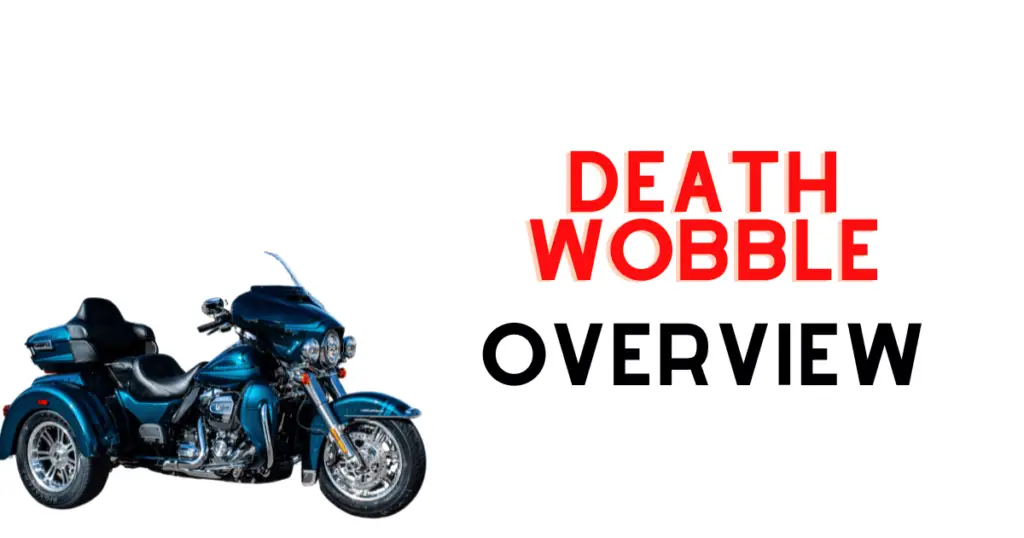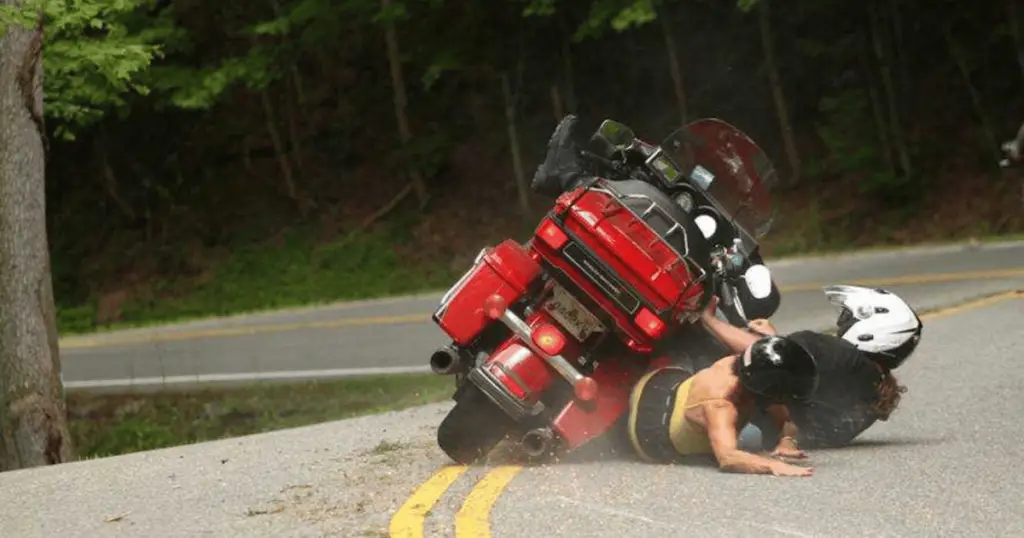Motorcycle enthusiasts often praise Harley-Davidson bikes for their iconic style and the unique sense of freedom they offer. However, a phenomenon known within the riding community as the “death wobble” has been a topic of concern for certain models. The term “death wobble” refers to a rapid oscillation of the front wheel and handlebars that can occur at high speeds, potentially leading to a loss of control. This unnerving experience is not confined solely to Harley-Davidson motorcycles but has been notably reported by riders of certain Harley models which leads us to dive into the Harley death wobble model years, in support of the community.
Over the years, specific models and model years of Harley-Davidson motorcycles have been identified by riders and in online forums as being more prone to this high-speed instability. Reported issues with handling and stability were first noted with the Road Glide’s debut in 1998, and fuel system problems that might contribute to instability were highlighted in the 2000-2001 models. Moreover, further concerns arose with models produced between 2009-2013 due to frame and swingarm issues. Harley-Davidson has taken steps to address and mitigate these issues, but the conversation continues within the consumer community. So what else do you need to know?
The “death wobble” often sparks debate among Harley-Davidson owners and motorcycle enthusiasts about the cause and solutions. While some attribute it to design flaws or mechanical failures, others suggest that improper maintenance or aftermarket modifications could exacerbate the problem. Riders are encouraged to ensure their motorcycles are well-maintained and to seek professional inspections if they experience wobble incidents, as proper mechanical attention can significantly reduce the risk of this phenomenon. But what exactly is this attention? Keep reading and let’s get into the details so I can show you!
Related Reads:
- What Year Harleys to Avoid: Comprehensive Guide (Experience)
- Absolute Worst Harley Fatboy Years to Avoid (Or Else)
- Shovelhead Years to Avoid Like The Plague (Here’s Why)
- Sportster Years To Avoid (If You Know What’s Good For You)
- Road King Years To Avoid (A Mechanic Tells All)
- Street Glide Years To Avoid: Trust Me, For The Best
- Electra Glide Years To Avoid: A Complete Overview
Overview of The Harley Death Wobble

The Death Wobble in motorcycles refers to a severe instability that can occur at high speeds, involving an uncontrollable shaking or “wobble” of the front end. This section outlines the mechanical aspects of the wobble and discusses model years known to be affected.
Mechanics of the Death Wobble
The Death Wobble, which can also be termed as a “tank slapper” or “speed wobble,” is a condition where the front end of a motorcycle shakes or wobbles back and forth uncontrollably. It generally happens at high speed and can be triggered by mechanical problems. Key components such as the suspension, frame, and steering head bearing play a crucial role in the stability of the motorcycle.
- Steering head bearing: If too loose or worn, it may fail to provide the necessary stability, leading to a wobble.
- Suspension: Inadequate suspension can cause the bike to weave, reducing the ability to absorb road imperfections.
- Handlebars: Riders may inadvertently amplify a wobble by overcorrecting with the handlebars.
High-speed dynamics amplify the effect of any instability, creating a feedback loop where the wobble worsens if not quickly controlled by the rider.
Most Affected Harley Death Wobble Model Years
Over the years, various model years have been reported to experience the Death Wobble more frequently. Notably, some Harley Davidson motorcycles have been highlighted for this issue:
- Early 2000s models: Reported cases of wobble, with varying factors from mechanical wear to rider input affecting the likelihood of an occurrence.
- Touring models: Instances of wobble have been discussed within the Harley Davidson community, often referring to specific touring models.
It should be noted that the Death Wobble is not exclusive to Harley Davidson motorcycles and can affect various makes and models, typically during high-speed maneuvers when mechanical integrity is compromised.
Deeper Dive Into The Wobble Affected Years
This section focuses on the specific issues relating to certain Harley-Davidson model series and the associated aspects of their design. It emphasizes the impact of specific engineering choices on the models’ performance and reliability.
Touring and Dyna Series
Harley-Davidson’s Touring and Dyna series have been popular among motorcyclists for their customizability and style. Notably, models like the Road King and Electra Glide are well-known offerings within the Touring series. They are designed for long-distance riding and offer a blend of comfort and performance. Similarly, the Dyna series, recognized for its custom-oriented features, provides a different riding experience optimized for handling and agility. Though many riders have had positive experiences with these models, concerns have been raised about stability issues, often referred to as the “Death Wobble.”
Related: Best and Worst Dyna Years: A Comprehensive Model Analysis
Engine and Frame Design Issues

The design of the engine and frame has a significant impact on a motorcycle’s stability. In the case of Harley-Davidson, some models have been reported to experience stability issues that could compromise rider safety. The design flaw in question is often tied to the motorcycle’s swing arm, which is a critical part of the rear suspension system. The swing arm’s mounting to the transmission rather than directly to the bike’s frame may contribute to stability problems under certain conditions. Stability concerns such as these can lead to lawsuits and recalls, as safety is paramount in vehicle design.
Maintenance Tips to Prevent The Harley Death Wobble
Preventing the occurrence of the Harley ‘Death Wobble’ primarily involves adhering to stringent maintenance protocols and considering certain upgrades to enhance motorcycle stability. A rider’s commitment to regular checks and appropriate modifications not only improves safety but can significantly contribute to the overall performance of their Harley-Davidson motorcycle.
Regular Inspection Routines
Regular inspections serve as the first line of defense against stability issues like the ‘Death Wobble.’ It is vital for a rider or mechanic to conduct thorough assessments of the motorcycle at consistent intervals. The following components should be examined routinely:
- Steering head bearings: Must be checked for Proper torque specifications and smooth movement without notchiness.
- Tire pressure: Correct tire inflation must be maintained to ensure optimal contact with the road.
- Suspension system: Inspection for any signs of wear or damage is critical, as it can affect motorcycle handling and stability.
Also important in prevention: The Ultimate Harley Davidson Tire Pressure Chart (PDF Guide)
Upgrade Recommendations
To boost their Harley’s performance and mitigate the risk of vibration-related instability, riders may consider the following upgrades:
- Stabilizer kit: Installing a high-quality stabilizer kit can provide additional support to the frame, reducing flex and the chances of experiencing a wobble.
- Tires: Upgrading to high-performance tires can help in achieving more balanced handling and weight distribution.
- Suspension: Enhanced aftermarket suspension components can improve the bike’s response to uneven surfaces and overall ride quality.
Riders should consult with an experienced mechanic to identify the most suitable upgrades for their specific motorcycle model and to ensure that the installation is performed correctly.
Was There Legal Action Taken Due to The Death Wobble? What Should You Know?

When evaluating the phenomenon of the so-called “Harley Death Wobble,” the intersection of safety concerns and legal recourse is paramount. This section examines the implications for riders in the event of an accident attributed to a wobble and their entitlements under the law.
Incidence of Accidents and Injuries
Motorcycle accidents involving the “Death Wobble” are serious incidents where a bike becomes difficult to control, often leading to crashes. Injury reports from riders have noted that certain Harley-Davidson models may exhibit instability at high speeds, potentially resulting in accidents. When such an accident occurs, injuries can range from minor abrasions to more severe, life-threatening conditions.
- Common injuries include:
- Fractures
- Head trauma
- Spinal injuries
Rider’s Legal Rights and Compensation
Individuals involved in motorcycle accidents as a result of a mechanical wobble have the legal right to seek compensation. This applies especially if there is evidence of a known defect with the motorcycle. In these cases, riders may file lawsuits against the manufacturer. These legal actions may require demonstration of the defect and causation linked to the accident.
- Legal actions can lead to:
- Compensation for medical expenses
- Recovery of lost wages
- Damages for pain and suffering
In dealing with insurance companies, riders should be aware of their policy’s terms, especially if their claim involves a cited defect. Safety practices and adherence to proper bike maintenance play crucial roles in mitigating the onset of wobbles and ensuring traction control, which can influence both the frequency of accidents and legal outcomes.
How Has The Death Wobble Affected The Harley Community?
Harley-Davidson has long been synonymous with American culture, representing more than just a motorcycle brand—it is a lifestyle that bonds a community of riders. On the road, models like the Road Glide, Street Glide, and Electra Glide Classic are more than modes of transportation; they are emblems of freedom and individuality.
The brand’s storied history is deeply woven into the fabric of American life, shaping a brotherhood and sisterhood among enthusiasts. Harley riders are often seen as ambassadors of a timeless tradition, where the love for the open road and the sound of a Harley engine unite disparate individuals into a cohesive group.
The phenomenon known as the “Harley Death Wobble,” associated with moments when motorcycles, including those with a fairing or a trike model, experience a rapid oscillation of the front wheel, has become a topic of significant discussion within this community. Riders with motorcycles equipped with an EFI (Electronic Fuel Injection) system often share tips and modifications to prevent this issue, fostering a culture of collective knowledge and support.
Harley-Davidson’s impact is evident in social gatherings and events across the nation, where tales of the open road are shared, advice is exchanged, and camaraderie is built. Despite the challenge of the wobble, riders’ spirits remain undeterred, affirming their commitment to the brand and the connected lifestyle.
The community’s response to the “Death Wobble” has only solidified the solidarity among Harley-Davidson enthusiasts, signaling their resilience and adaptability in the face of adversity. They continue to ride and support one another, striving to embody the quintessential American spirit that Harley-Davidson evokes.